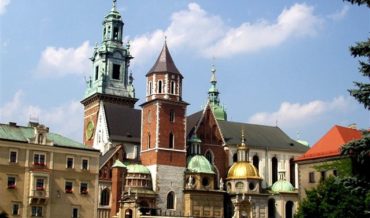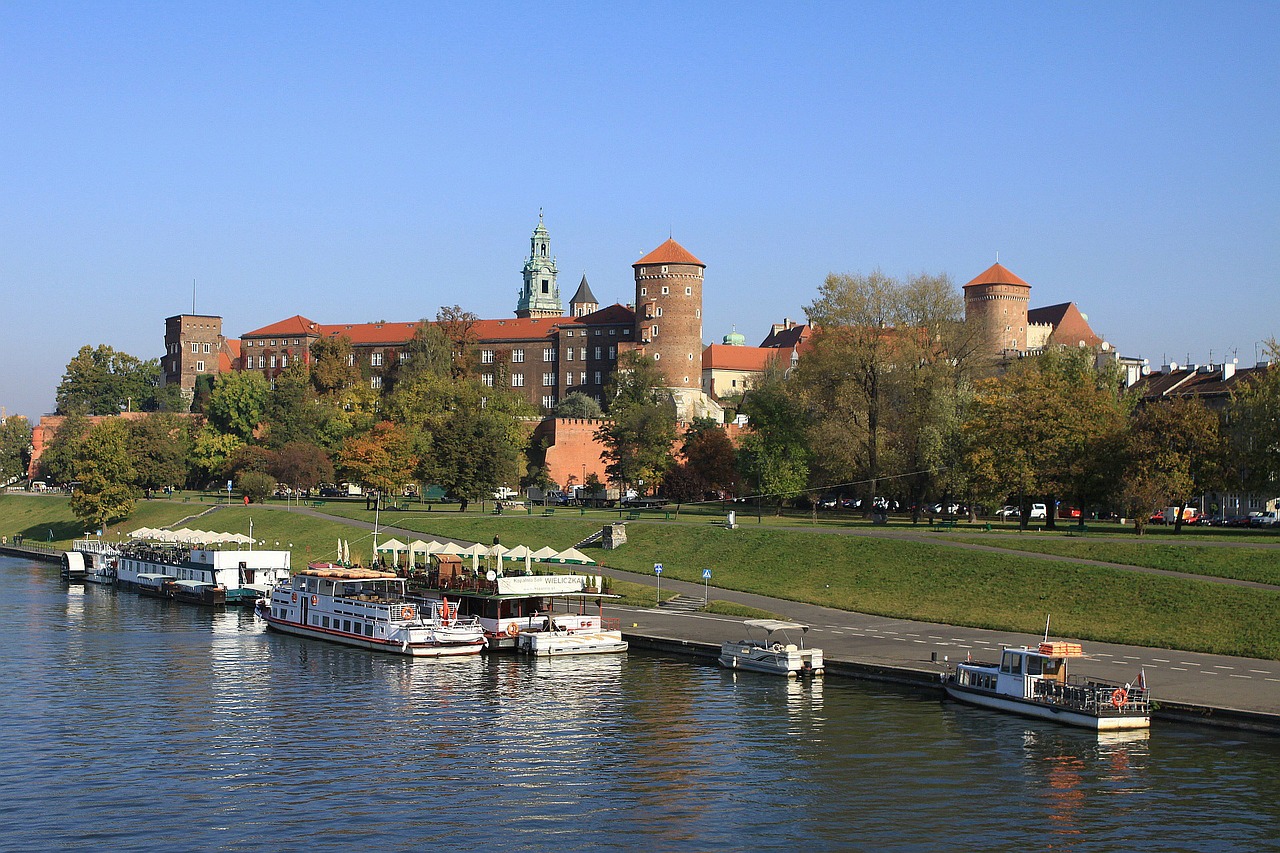Contents
Key Facts
• Polish statesman and independence leader who lived from 1867 to 1935
• Central figure in Poland's fight for independence and interwar politics
• Long-time resident of Krakow from 1901 until World War I
• Commander of the 1st Brigade of Polish Legions during WWI
• Head of State of newly independent Poland (1918-1922)
• Conducted a coup d'état in 1926, ruling Poland until his death
• Buried at Wawel Cathedral in the crypt under the Silver Bell Tower
• Multiple residences throughout Krakow commemorated today
Early Life and Socialist Activism
Józef Piłsudski was a Polish social and independence activist, soldier, politician, and statesman who lived from 1867 to 1935. Born into a Lithuanian noble family in the village of Żuławy (present-day Lithuania), he would become one of the most influential figures in modern Polish history.
From 1893, Piłsudski served as a member of the three-person Central Workers' Committee of the Polish Socialist Party (PPS), marking the beginning of his lifelong commitment to Polish independence. His dedication to the socialist cause led to his appointment as editor-in-chief of Robotnik (The Worker), the party's underground newspaper, a position he held from 1894 to 1900. This publication became a crucial tool for spreading socialist ideas and promoting Polish independence throughout the partitioned territories under Russian, Austrian, and Prussian control.
The Krakow Years (1901-1914)
Arrival and Early Activities
In 1901, after successfully escaping arrest by the Russian authorities in St. Petersburg, Piłsudski relocated to Austrian-controlled Galicia, where he remained active exclusively in Krakow until World War I. This period, spanning over a decade, would prove instrumental in shaping both his political philosophy and his revolutionary network. His arrival in Krakow came decades after Krakow's 1846 revolution, yet the spirit of resistance remained strong in the city.
The relative freedom offered by Austrian rule in Galicia, which had replaced the earlier Republic of Krakow, allowed Piłsudski to operate more openly than would have been possible under Russian or Prussian occupation. Krakow became the nerve center of his independence activities, providing a strategic base from which to coordinate efforts across all three partitioned territories of Poland. The Austrian policy of cultural autonomy in Galicia, which allowed for Polish-language education and cultural institutions, created an environment where Polish nationalist activities could flourish more freely than in other partitioned territories within the broader Małopolska region.
Underground Network and Meeting Places
The PPS committee lectures and meetings were strategically held at various locations throughout the city to avoid detection by Austrian authorities, despite the relatively liberal policies. These clandestine gatherings took place on:
- Ariańska Street – serving as one of the primary meeting locations for revolutionary planning
- Lubicz Street – specifically at the residence of Odon Bujwida, a prominent physician and social activist who supported the independence cause
- Karmelicka Street – another key location for coordinating resistance activities across partitioned Poland
These meetings were crucial for coordinating resistance activities, planning future operations, and maintaining connections with socialist and independence movements across Europe. The choice of these locations reflects the careful balance between accessibility for conspirators and security from Austrian surveillance.
Residences Throughout the City
During his extended stay in Krakow, Piłsudski lived at several addresses, demonstrating both his integration into the city's fabric and the need for security precautions typical of underground political activists. His documented residences included:
Topolowa Street:
- Number 14
- Number 16
- Number 18
- Number 24
Szlak Street:
- Number 25
- Number 31
These frequent changes of address likely reflected security considerations as well as the transient nature of his underground activities. Many of these streets were located in areas with mixed populations and good access to transportation routes, facilitating both legitimate residence and clandestine operations. Today, commemorative plaques mark several of these locations as important historical sites documenting his presence in the city.
Military Leadership and World War I
Formation of the Polish Legions
With the outbreak of World War I in 1914, Piłsudski saw an opportunity to advance the cause of Polish independence through military action. He became the commander of the 1st Brigade of Polish Legions from 1914 to 1916, leading Polish forces fighting alongside Austria-Hungary against Russia in what became known as the Eastern Front campaign.
The Polish Legions represented Piłsudski's vision of creating a disciplined, professional Polish military force that would serve as the foundation for a future independent Polish army. Under his leadership, the 1st Brigade became renowned for its effectiveness and played a crucial role in several major battles, including engagements at Kostiuchnówka and other Eastern Front locations.
Strategic Vision and Political Complications
Piłsudski's military strategy was deeply intertwined with his political goals. He believed that Poland's independence could only be achieved through armed struggle and that Poles needed to demonstrate their military capabilities to gain recognition from the major powers. However, his relationship with Austria-Hungary became increasingly strained when it became clear that the Central Powers had no intention of granting true Polish independence. This led to his arrest and imprisonment by German forces in 1917, making him a martyr figure for Polish independence.
Head of State and Nation Builder
Leading Independent Poland
In November 1918, as the Central Powers collapsed and Poland regained independence after 123 years of partition, Piłsudski was appointed Head of State by the Regency Council in Warsaw, a position he held until 1922. This period was marked by enormous challenges as the new nation had to:
- Establish governmental institutions from scratch across territories with different legal systems
- Integrate territories with different administrative, economic, and educational systems
- Defend against multiple military threats from neighboring countries seeking territorial gains
- Create a unified national identity among diverse populations including Poles, Ukrainians, Germans, and Jews
His leadership style during this period would later influence the governance approach of various presidents of Krakow and other Polish cities as the nation rebuilt its administrative structures.
The Polish-Soviet War and the Battle of Warsaw
One of Piłsudski's greatest achievements during this period was his leadership during the Polish-Soviet War (1919-1921). His strategic brilliance was particularly evident during the Battle of Warsaw in August 1920, often called the "Miracle at the Vistula," where Polish forces under his command decisively defeated the advancing Red Army led by Mikhail Tukhachevsky. Historical scholars like Norman Davies argue that this victory potentially prevented the spread of Bolshevik revolution into Western Europe, fundamentally altering the course of 20th-century European history.
The May Coup and Authoritarian Rule
Return to Power
In May 1926, dissatisfied with the political instability, economic hyperinflation, and frequent government changes plaguing the Polish Republic, Piłsudski staged a coup d'état that brought him back to power. From this point until his death in 1935, he effectively controlled Poland's political life, establishing an authoritarian regime known as the "Sanacja" (Sanation) government.
This period remains controversial among historians. Supporters argue that Piłsudski's rule brought political stability and economic recovery to Poland, while critics contend that it significantly curtailed democratic freedoms and parliamentary governance. The regime was characterized by:
- Strong central authority under Piłsudski's leadership and his trusted associates
- Suppression of political opposition, including imprisonment of opposition leaders
- Economic stabilization efforts and infrastructure modernization projects
- Emphasis on state-building and promoting Polish national unity above party politics
Cultural and Symbolic Initiatives
A year after the coup, in 1927, Piłsudski initiated the transfer of Juliusz Słowacki's ashes to Wawel Castle, where they were solemnly deposited in the royal necropolis alongside Polish kings and national heroes. This gesture demonstrated his understanding of Polish cultural heritage and the symbolic importance of Wawel as the spiritual heart of the nation, connecting the Second Polish Republic to the historical Polish Kingdom and the legacy of the ancient Polish kings.
Public Appearances and Legacy in Krakow
Notable Speeches and Events
Throughout his time in Krakow, Piłsudski maintained an active public presence, speaking at various venues across the city to build support for the independence movement. One particularly notable occasion was his speech at the Hotel Pod Różą (Hotel Under the Rose), a historic establishment in the Main Market Square located in Krakow's historic Old Town, where he addressed members of an academic association, demonstrating his continued engagement with Krakow's intellectual circles.
He also gave political speeches in Podgórze, the historic district across the Vistula River from Krakow's Old Town, showing his connection to all parts of the greater Krakow metropolitan area and his ability to reach diverse constituencies.
Commemorative Sites and Modern Recognition
Today, numerous locations throughout Krakow commemorate Piłsudski's significant presence in the city. These sites include memorial plaques on buildings where he lived, streets named in his honor, and historical markers documenting his revolutionary activities. The locations serve as important reminders of his role in Polish history and Krakow's function as a center of resistance during the partition period.
Death and Final Rest
Burial at Wawel Cathedral
When Piłsudski died on May 12, 1935, in Warsaw, his death marked the end of an era in Polish politics. He was initially buried in the Wawel Cathedral in the crypt of St. Leonard. However, recognizing the inadequacy of this location for such a significant historical figure, his remains were moved two years later to the crypt under the Silver Bell Tower, where they remain today alongside other Polish national heroes.
This final resting place carries profound symbolic weight, as Wawel served as the royal residence of Polish kings for centuries and represents the continuity of Polish statehood across different historical periods. Piłsudski's burial there places him among the most revered figures in Polish history, alongside medieval kings, queens, and national poets like Adam Mickiewicz.
Historical Impact and Scholarly Assessment
Complex Historical Legacy
Piłsudski's legacy remains complex and continues to generate scholarly debate among historians. Supporters, including biographers like Wacław Jędrzejewicz, praise him as the "Father of Polish Independence" who successfully restored Poland to the map of Europe after more than a century of foreign rule and defended it against multiple external threats. Critics, such as historians studying interwar European authoritarianism, point to his authoritarian tendencies after 1926 and his role in undermining democratic institutions established in the 1921 Constitution.
Historiographical Perspectives
Modern historical scholarship, including works by scholars like Timothy Snyder and Robert Blobaum, examines Piłsudski within the broader context of early 20th-century European nationalism and state-building. These analyses highlight both his achievements in creating modern Polish statehood and the contradictions between his early democratic socialist ideals and his later authoritarian governance. His era coincided with other prominent Polish cultural figures such as Henryk Sienkiewicz and Cyprian Kamil Norwid, who similarly contributed to Polish national consciousness through literature and cultural works.
Enduring Influence on Polish Political Culture
Regardless of varying political assessments, Piłsudski's impact on modern Poland cannot be overstated. His strategic vision, military leadership, and nation-building efforts laid the institutional and cultural foundation for Polish statehood that would prove resilient even through the devastating period of World War II and Communist rule. His time in Krakow represents a crucial chapter in this larger historical narrative, demonstrating how the ancient royal capital continued to serve as a center of Polish political and cultural life even during the partition period.
Krakow's role as Piłsudski's operational base from 1901 to 1914 underscores the city's continued importance as a center of Polish resistance and intellectual life during one of the most challenging periods in the nation's history, when Polish independence seemed impossible to most contemporary observers.

